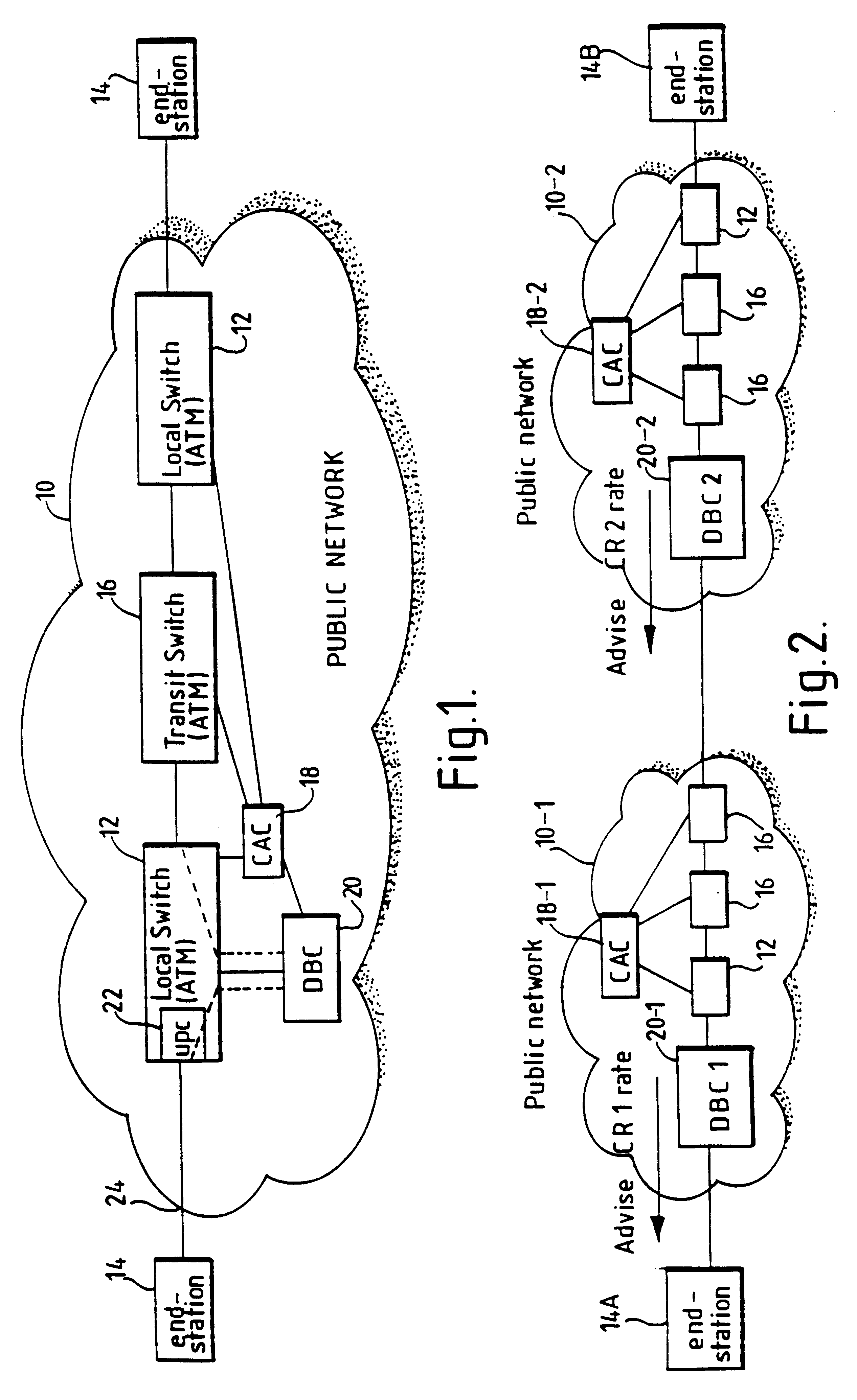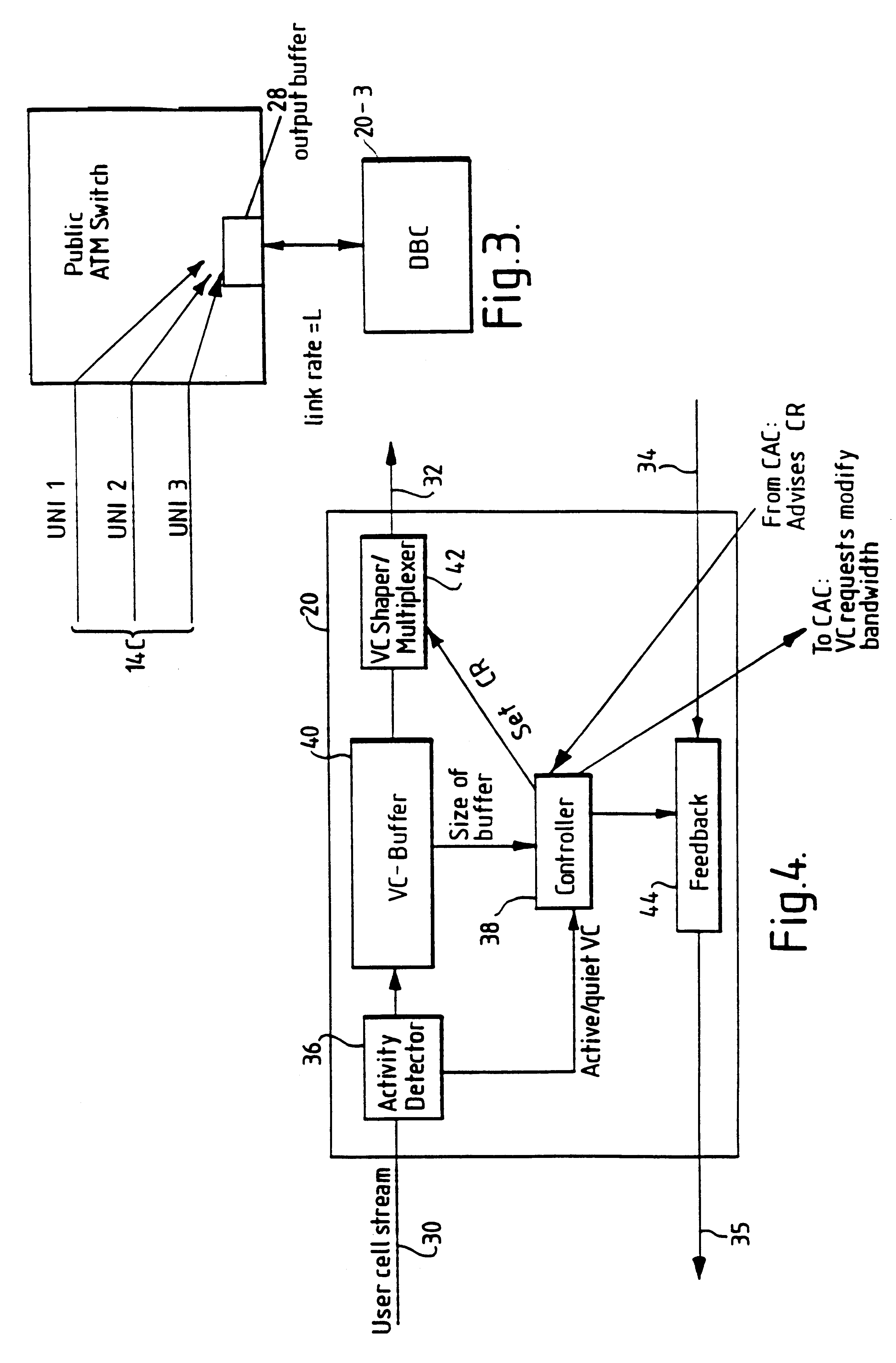Broadband switching system
a switching system and broadband technology, applied in the field of broadband switching system, can solve the problems of not being able to meet the requirements of the customer,
- Summary
- Abstract
- Description
- Claims
- Application Information
AI Technical Summary
Problems solved by technology
Method used
Image
Examples
Embodiment Construction
In its preferred form, the invention is concerned with a broadband switching network which may form part of or may constitute a public switching network for the transmission of asynchronously transferred data cells between end-systems.
Referring to FIG. 1, the public network 10 has a plurality of switches operable in asynchronous transfer mode (ATM). In this simple example, the switches include two local switches 12 each having a port for connection to a respective end-system 14, and a transit switch 16 interconnecting the local switches 12. Associated with the switches is a connection admission control function (CAC) 18 and a dynamic bandwidth controller (DBC) 20 for controlling traffic entering the network through one of the local switches 12. This switch 12 also includes a usage parameter control device 22 for dynamically altering the priority of data cells received at the input port 24 of the network from the end-system 14.
It will be understood that, in practice, the network 10 w...
PUM
 Login to View More
Login to View More Abstract
Description
Claims
Application Information
 Login to View More
Login to View More - R&D
- Intellectual Property
- Life Sciences
- Materials
- Tech Scout
- Unparalleled Data Quality
- Higher Quality Content
- 60% Fewer Hallucinations
Browse by: Latest US Patents, China's latest patents, Technical Efficacy Thesaurus, Application Domain, Technology Topic, Popular Technical Reports.
© 2025 PatSnap. All rights reserved.Legal|Privacy policy|Modern Slavery Act Transparency Statement|Sitemap|About US| Contact US: help@patsnap.com



